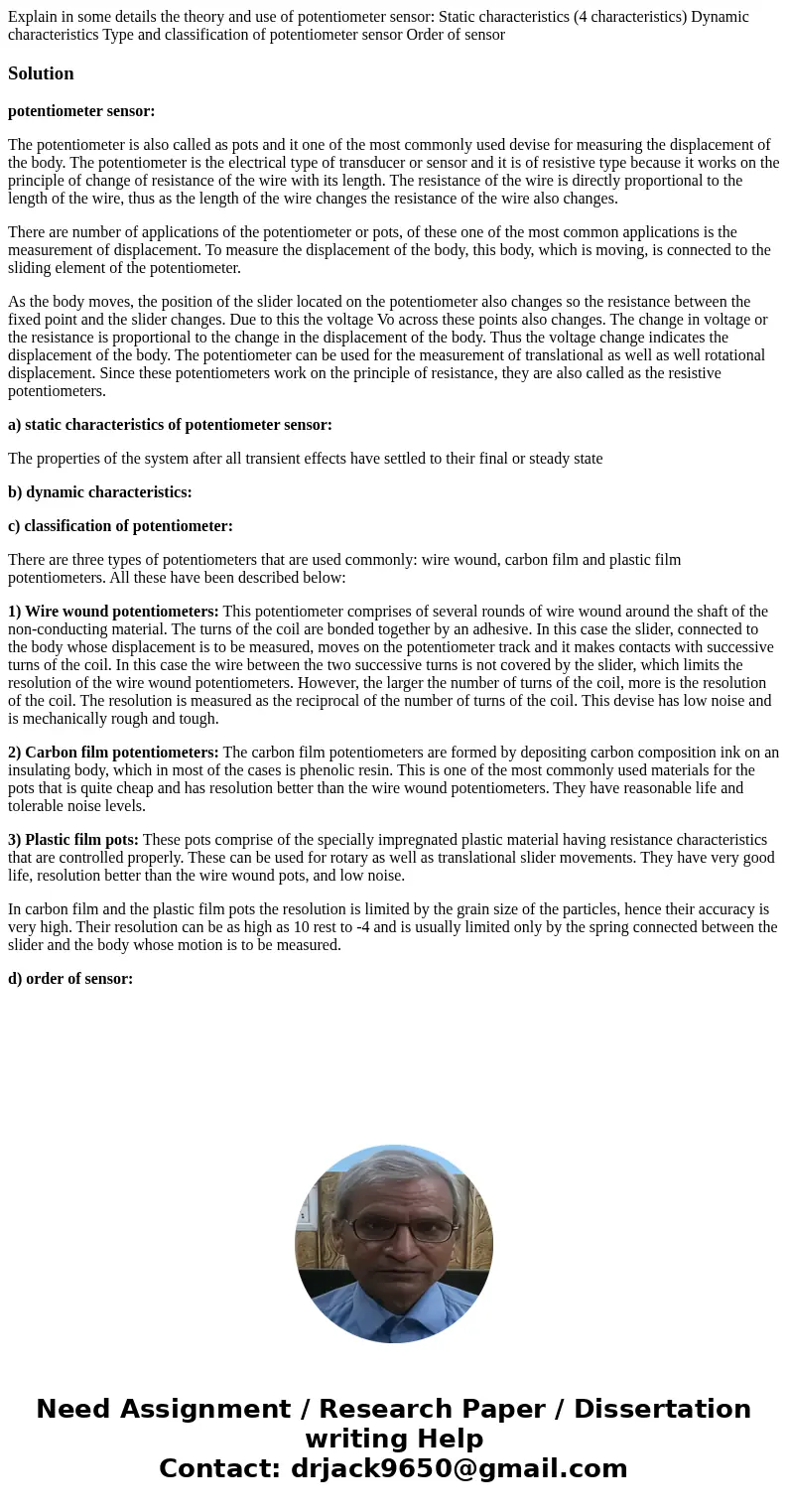Explain in some details the theory and use of potentiometer
Solution
potentiometer sensor:
The potentiometer is also called as pots and it one of the most commonly used devise for measuring the displacement of the body. The potentiometer is the electrical type of transducer or sensor and it is of resistive type because it works on the principle of change of resistance of the wire with its length. The resistance of the wire is directly proportional to the length of the wire, thus as the length of the wire changes the resistance of the wire also changes.
There are number of applications of the potentiometer or pots, of these one of the most common applications is the measurement of displacement. To measure the displacement of the body, this body, which is moving, is connected to the sliding element of the potentiometer.
As the body moves, the position of the slider located on the potentiometer also changes so the resistance between the fixed point and the slider changes. Due to this the voltage Vo across these points also changes. The change in voltage or the resistance is proportional to the change in the displacement of the body. Thus the voltage change indicates the displacement of the body. The potentiometer can be used for the measurement of translational as well as well rotational displacement. Since these potentiometers work on the principle of resistance, they are also called as the resistive potentiometers.
a) static characteristics of potentiometer sensor:
The properties of the system after all transient effects have settled to their final or steady state
b) dynamic characteristics:
c) classification of potentiometer:
There are three types of potentiometers that are used commonly: wire wound, carbon film and plastic film potentiometers. All these have been described below:
1) Wire wound potentiometers: This potentiometer comprises of several rounds of wire wound around the shaft of the non-conducting material. The turns of the coil are bonded together by an adhesive. In this case the slider, connected to the body whose displacement is to be measured, moves on the potentiometer track and it makes contacts with successive turns of the coil. In this case the wire between the two successive turns is not covered by the slider, which limits the resolution of the wire wound potentiometers. However, the larger the number of turns of the coil, more is the resolution of the coil. The resolution is measured as the reciprocal of the number of turns of the coil. This devise has low noise and is mechanically rough and tough.
2) Carbon film potentiometers: The carbon film potentiometers are formed by depositing carbon composition ink on an insulating body, which in most of the cases is phenolic resin. This is one of the most commonly used materials for the pots that is quite cheap and has resolution better than the wire wound potentiometers. They have reasonable life and tolerable noise levels.
3) Plastic film pots: These pots comprise of the specially impregnated plastic material having resistance characteristics that are controlled properly. These can be used for rotary as well as translational slider movements. They have very good life, resolution better than the wire wound pots, and low noise.
In carbon film and the plastic film pots the resolution is limited by the grain size of the particles, hence their accuracy is very high. Their resolution can be as high as 10 rest to -4 and is usually limited only by the spring connected between the slider and the body whose motion is to be measured.
d) order of sensor:

 Homework Sourse
Homework Sourse